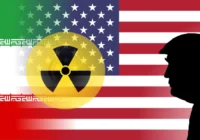In this episode, we have a Ukrainian-American guest and you can read what she has to say below.
FO° Insights is a new feature where our contributors make sense of issues in the news.
Katerina Manoff on the No-Fly Zone Issue and More
Hi, I’m Katerina Manoff and I’m a Ukrainian-American nonprofit leader and writer and I am also a volunteer in the war effort focusing on media work and supporting the Ukrainian Air Force.
What is a no-fly zone?
We’ve all heard the term no-fly zone. You may also hear terms like air superiority or air dominance. These terms refer to the same broad concept: the idea of controlling the sky. The party who is dominant in the air can protect its own ground troops while attacking the troops, supply chains and critical infrastructure of the enemy. The other combatant literally cannot fly out because they will be shot down if they do. Hence, no-fly zone.
To gain air dominance you need the full arsenal tools, which include fighter jets in the sky and medium and long range missile defense systems on the ground. Ukraine is vastly outnumbered in the sky. Depending on how you count military equipment, Russia has anywhere from six to ten times as many air defense weapons, both in the sky and on the ground. That was at the beginning of the war. With Ukraine losing many of its weapons in battle and not really having a way to replenish those, the differential is even greater.
Can Ukraine repel Russian forces without a no-fly zone?
The situation is pretty dire. Ukraine’s Air Force does not have the tools that it needs to repel Russian attacks, and the US and NATO are refusing to provide or sell these tools. When we hear about Ukraine successes on the ground — you know — tractors towing tanks or Ukrainian troops having higher morale or retaking dozens of villages, we have to put that into context. Unfortunately, these stories don’t mean very much in the big picture, unless Ukraine’s allies change their current policy of refusing to provide air defense support.
Why has a no-fly Zone been rejected?
I think there are two answers. The first is that it could be just another symptom of a bumbling reactive foreign policy. Russian President Vladimir Putin has been a threat for years, if not decades. The West has bungled its response to his aggression in Georgia and Syria as well as his takeover of Crimea. If we think back to Syria and then US president Barack Obama’s infamous red line, we can see this is not just a problem with the current administration. This is also not just a Ukraine problem. Rather, it’s a deeper leadership failure in the United States. America is acting based on principles of fear and appeasement of dictators.
The other answer could be that this US policy towards Ukraine might be very calculated. Washington could have made a conscious decision to let Putin slowly destroy Ukraine and weaken Russia in the process. If this is the case, then US President Joe Biden and his advisers are purposely giving Ukraine just enough aid to keep fighting and keep bleeding the Russians, but refuse any substantive help that could actually end the war and help Ukraine win.
Wouldn’t a no-fly zone start World War III?
Fears of World War III play right into Russia’s hands. If we use fear of nuclear war as an excuse to allow mass murder, rape and torture, and let war crimes go unpunished, that just emboldens Putin and other dictators to keep going, to conquer more lands and to kill more people.
Ukrainian President Volodymyr Zelensky has been saying for weeks that if the US and NATO are afraid of nuclear war, they don’t need to enforce a no-fly zone themselves. They can just give Ukraine the tools needed to do the job. If Ukrainian pilots and soldiers are flying the planes and operating the missile defense systems, then NATO is not entering the conflict directly.
What should the West do to help Ukraine?
The West needs to figure out a way to get Ukraine the fighter jets and missile defense systems it needs. This is the only way the war can end. Current policies such as economic sanctions, humanitarian aid and military support in the form of other types of weapons are all useful and should continue. However, it is important to recognize these steps for what they are: secondary policies that cannot end the war without filling the primary need for air defense.
The current US policy is really the worst of both worlds. The US should choose one way or another. Either Washington should actually support Ukraine and provide the weapons needed to win the war, which are fighter jets and medium and long range missile defense systems. Or, if Washington is not willing to do so, the Biden administration should be honest about its intentions and not leave Ukrainians hanging, waiting for aid that’s never going to come.
(This transcript has been lightly edited for clarity.)
The views expressed in this article are the author’s own and do not necessarily reflect Fair Observer’s editorial policy.
Support Fair Observer
We rely on your support for our independence, diversity and quality.
For more than 10 years, Fair Observer has been free, fair and independent. No billionaire owns us, no advertisers control us. We are a reader-supported nonprofit. Unlike many other publications, we keep our content free for readers regardless of where they live or whether they can afford to pay. We have no paywalls and no ads.
In the post-truth era of fake news, echo chambers and filter bubbles, we publish a plurality of perspectives from around the world. Anyone can publish with us, but everyone goes through a rigorous editorial process. So, you get fact-checked, well-reasoned content instead of noise.
We publish 2,500+ voices from 90+ countries. We also conduct education and training programs
on subjects ranging from digital media and journalism to writing and critical thinking. This
doesn’t come cheap. Servers, editors, trainers and web developers cost
money.
Please consider supporting us on a regular basis as a recurring donor or a
sustaining member.
Will you support FO’s journalism?
We rely on your support for our independence, diversity and quality.








Comment